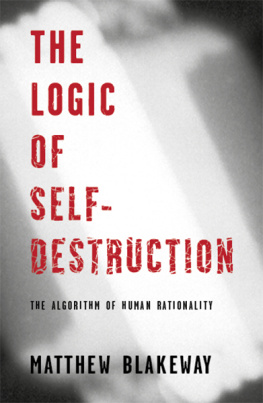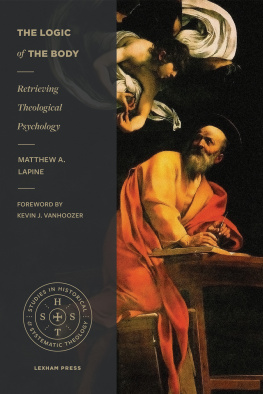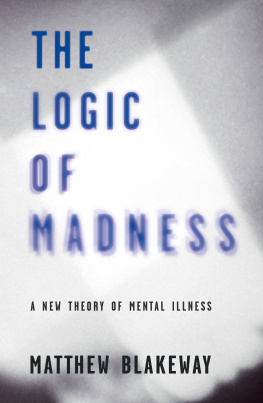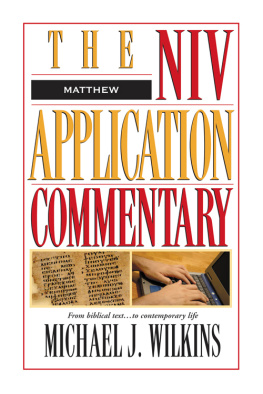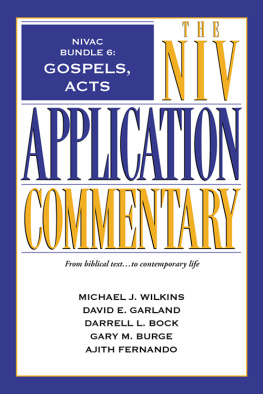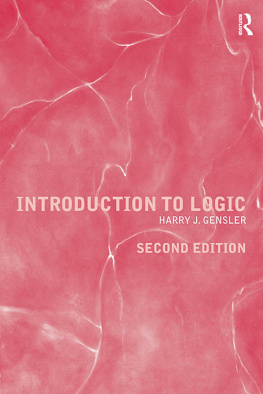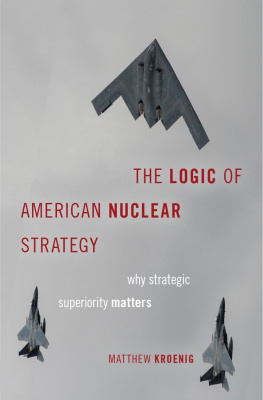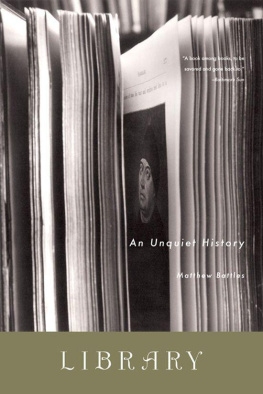Matthew Blakeway - THE LOGIC OF SELF-DESTRUCTION
Here you can read online Matthew Blakeway - THE LOGIC OF SELF-DESTRUCTION full text of the book (entire story) in english for free. Download pdf and epub, get meaning, cover and reviews about this ebook. year: 2014, publisher: Meyer LeBoeuf, genre: Politics. Description of the work, (preface) as well as reviews are available. Best literature library LitArk.com created for fans of good reading and offers a wide selection of genres:
Romance novel
Science fiction
Adventure
Detective
Science
History
Home and family
Prose
Art
Politics
Computer
Non-fiction
Religion
Business
Children
Humor
Choose a favorite category and find really read worthwhile books. Enjoy immersion in the world of imagination, feel the emotions of the characters or learn something new for yourself, make an fascinating discovery.
- Book:THE LOGIC OF SELF-DESTRUCTION
- Author:
- Publisher:Meyer LeBoeuf
- Genre:
- Year:2014
- Rating:3 / 5
- Favourites:Add to favourites
- Your mark:
- 60
- 1
- 2
- 3
- 4
- 5
THE LOGIC OF SELF-DESTRUCTION: summary, description and annotation
We offer to read an annotation, description, summary or preface (depends on what the author of the book "THE LOGIC OF SELF-DESTRUCTION" wrote himself). If you haven't found the necessary information about the book — write in the comments, we will try to find it.
THE LOGIC OF SELF-DESTRUCTION — read online for free the complete book (whole text) full work
Below is the text of the book, divided by pages. System saving the place of the last page read, allows you to conveniently read the book "THE LOGIC OF SELF-DESTRUCTION" online for free, without having to search again every time where you left off. Put a bookmark, and you can go to the page where you finished reading at any time.
Font size:
Interval:
Bookmark:
Becky Ferriera and Kyle Beaver were my editors. Leo Hollis also provided editorial feedback through The Literary Consultancy in London. Stephen Cashmore was my proofreader. Kristen Harrington of the Curved House designed my website and my cover. Eric J Henderson was my photographer.
Noam Chomsky gave valuable time to discuss some of the ideas behind the book. Ian Hancock of the University of Texas provided guidance and material on the Romany Holocaust and provided feedback on draft chapters.
Dawn Carrington, Sylvia Hesse, Andrea Kail, Tina Nole, Tim Sultan, Elizabeth Weaver and Brian Glyn Williams all reviewed drafts and provided feedback. Brian also inspired my interest in genocide and terrorism.
Concentrate now! Yes, you at the back... This appendix sums up the entire theory of Part I of the book. However, dont think that by reading it you can save time and not bother reading the book because, if you try that, you wont have a clue what its going on about.
This is how our understanding of our emotions is supposed to work: circumstances in our environment cause us to have a feeling; this causes us to exhibit a certain behaviour; anyone can observe the behaviour but the feeling is private; only the fact that the behaviour is public enables us to form a concept of the emotion, and collectively an ability to name it; we use the word as though it refers directly to the feeling, but in reality it refers indirectly to the unseen cause of the behaviour (whatever that might be).
Tactical deception with the behaviour disrupts this process. Firstly, it causes us to form an incorrect concept of the emotion: suppressed behaviour disrupts identification of an emotion, and affected behaviour creates false beliefs as to its cause. When we goalseek an emotional outcome with a disrupted concept of the emotion, we rationally choose a self-destructive action.
- Scenario A involves suppression of emotional behaviour by third parties;
- Scenario B the suppression is by the protagonist;
- Scenario C involves affectation by the protagonist; and
- Scenario D involves affectation by third parties.
We can construct a 2x2 matrix: one axis is affection or suppression; and the other axis is first person or second/third person. Respectively: they suppress; I suppress; I affect; they affect.
(1) When we remember emotions, we think we remember the feeling, but our memory tricks us by recalling surrogates of the feeling (such as the behaviour) (BEHAVIOUR IS THE ONLY CONSTANT);
(2) Human action is driven by goal-seeking the achievement of positive emotional states and the avoidance of negative ones (INTENT);
(3) Humans implicitly form theories that certain sets of circumstances cause certain emotional states (BELIEF);
(4) Humans act on the belief (3) to establish sets of circumstances that cause positive emotional states, and avoid the sets of circumstances that cause negative emotional states (DERIVE AN ACTION).
The action is rationally derived from the concept of the emotion, and this remains the case even if the concept is distorted; so from here the theory reduces to: How is the concept derived?
(5) Words for feelings reference whatever causes the behaviour. It is merely an assumption that this is caused by a feeling, so the metaphysics of the feeling becomes irrelevant. The word is a derivative of behaviour (CONCEPT AND LANGUAGE);
(6) Tactical deception with the behaviour, results in the concept of, or the word for, an emotion being derived from false data:
a. When the behaviour is suppressed, the evidence of the feeling is absent:
i. If the subject suppresses the behaviour, then they will interpret the word for the feeling as meaning just the behaviour; so if the feeling arises in themself (which will not trigger the behaviour) they will have no knowledge that they have the feeling associated with that behaviour. (ABSENCE OF BELIEF THAT OWN FEELING IS THE EMOTION THAT CAUSES BEHAVIOUR IN OTHERS) [Scenario B];
ii. If people in the subjects world suppress the behaviour, then the subject has no mechanism to allocate the word to the feeling. If a feeling arises in themselves and they hypothesise a name for that feeling, they have no mechanism to refute the hypothesis, so it is irrefutable. (A HYPOTHESIS AS TO FEELING IDENTITY AUTOMATICALLY BECOMES A BELIEF IN THE IDENTITY OF THE FEELING) [Scenario A];
b. When someone tactically affects the behaviour, the behaviour is caused by something other than the feeling (usually, in the first instance, by a belief about how modified behaviour will alter how others perceive them):
i. If the subject affects the behaviour (and therefore their own behaviour is not caused by the feeling) then the subject assumes the presence of the emotion without the feeling. (FALSE BELIEF OF WHAT CAUSES THEIR EMOTION) [Scenario C];
ii. If people in the subjects world affect the behaviour, then the subject will identify a false cause of the emotion in others. (FALSE BELIEFS OF WHAT CAUSES EMOTION IN OTHERS) [Scenario D];
(7) Each of the four circumstances described in (6) gives rise to an incorrect belief, so the simple derivation of action in (2) through (4) gives rise to a rationally derived self-destructive action, respectively:
a. With respect to suppression:
i. The self-suppressor will be unable to identify the causes of their feelings and will be unable to take corrective action. (CANNOT DETERMINE ACTION THAT ACHIEVES EMOTIONAL GOAL);
ii The person living in an environment of suppression will, upon hypothesising the identity of a feeling, be unable to refute that hypothesis. This will draw a false conclusion as to what emotional goal they have achieved. (CONTINUE A COURSE OF ACTION BASED ON FALSE BELIEF OF EMOTION ATTAINED.)
b. With respect to tactical affectation of behaviour:
i. The self-faker will continue to pursue a course of action that they believe will lead to an emotional outcome without being able to know whether they achieve that outcome. (REPEAT ACTION WITHOUT ABILITY TO DETERMINE SUCCESSFUL OUTCOME);
ii. The person living in an environment of affectation will pursue an incorrect course of action in the mistaken belief that it will lead to an emotional outcome. (PURSUE ACTION BASED UPON FALSE ASSUMPTION OF OUTCOME.)
Aeschylus. The Oresteia. Translated by G. Thomson. Cambridge: Cambridge University Press, 1938.
Aeschylus. The Oresteia, Agamemnon. Translated by A. Carson. New York: Faber and Faber, 2009.
Anderson, J. Betting on the Weather and Taking an Ice-Cold Bath. New York Times, 29 September, 2006.
Anderson, M M. Hidden Power: the palace eunuchs of Imperial China. Amherst: Prometheus Books, 1990.
Aristotle. Nicomachean Ethics. Translated by T. Irwin. 2nd edition. Cambridge: Hackett, 1999.
Baer, R. The Cult of the Suicide Bomber. Channel 4 documentary, London, 2005.
Barboza, D. Another Death at Electronics Supplier in China. New York Times, 21 May, 2010.
Barboza, D. String of Suicides Continues at Electronics Supplier in China. New York Times, 25 May, 2010.
Barboza, D and DuHigg, C. In China, Human Costs are Built into an iPad. New York Times, 25 January, 2012.
BBC. Timeline: Deaths at Deepcut, 2008. Accessed at: http://news.bbc.co.uk/2/hi/uk_news/3743131.stm on 18 July, 2013.
Becker, J. Hungry Ghosts: Maos secret famine. New York: Henry Holt, 1996.
Becker, J. The Chinese. New York: Simon & Schuster, 2000.
Behuniak, J. Mencius on Becoming Human. Albany: State University of New York, 2005.
Font size:
Interval:
Bookmark:
Similar books «THE LOGIC OF SELF-DESTRUCTION»
Look at similar books to THE LOGIC OF SELF-DESTRUCTION. We have selected literature similar in name and meaning in the hope of providing readers with more options to find new, interesting, not yet read works.
Discussion, reviews of the book THE LOGIC OF SELF-DESTRUCTION and just readers' own opinions. Leave your comments, write what you think about the work, its meaning or the main characters. Specify what exactly you liked and what you didn't like, and why you think so.

